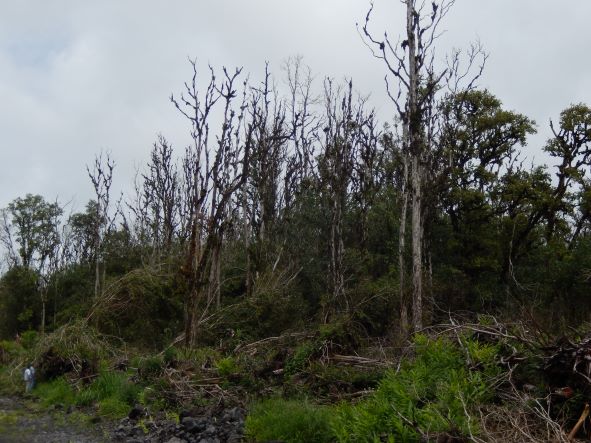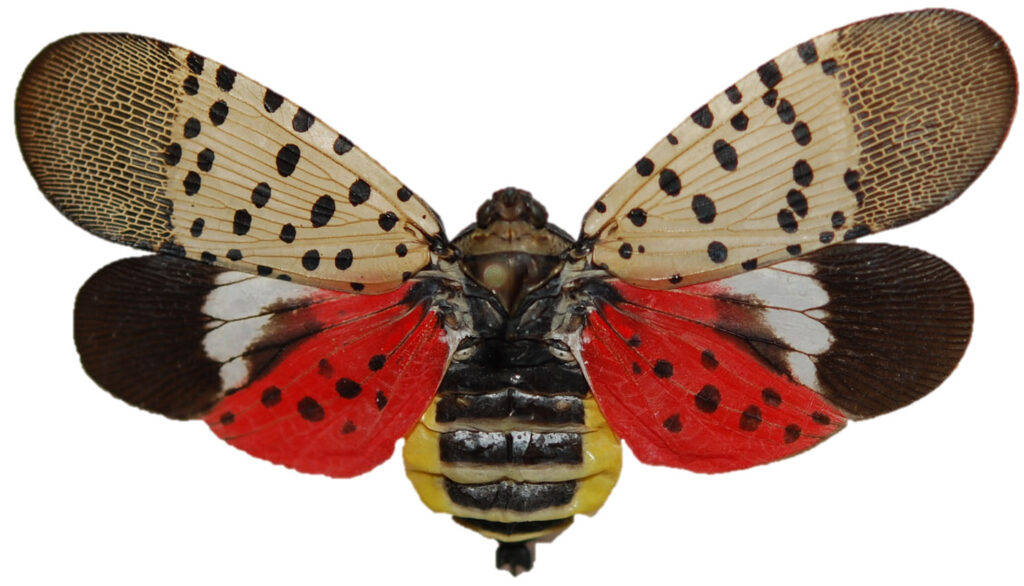The House and Senate Agriculture committees are edging toward adopting the next Farm Bill, which is a year past due. Farm bills set policy, funding levels, and more, for 5 years. Each covers a wide range of subjects, including crop subsidies and insurance; food stamps; rural development (including wifi access); forestry policy; and research.
As you might remember, CISP aims to improve USDA’s programs — not only to prevent introductions of non-native tree killing pests and pathogens but also to better respond to those that enter the US and become established. I summarize here what the Senate and House bills have in common and how they differ on these issues.
I understand that the minorities, that is, House Democrats and Senate Republicans, have not accepted all aspects of the majorities’ drafts. So let’s take the opportunity to ask for better bills.
Both the House and Senate bills would “simplify” the USDA Forest Service’s obligations to prepare environmental assessments under the National Environmental Policy Act (NEPA). I have not analyzed which bill weakens NEPA more.

The Senate Bill: The Rural Prosperity and Food Security Act of 2024
The Senate bill addresses forest pest species in several places: Title II — Conservation, Title VII — Research, and Title VIII — Forestry. Here, I describe relevant sections, beginning with the section that partially addresses CISP’s proposal.
Title VIII — Forestry. Section 8214 requires the USDA Secretary to establish a national policy to counter threats posed by invasive species to tree species and forest ecosystems and identify areas for interagency cooperation.
This mandate falls far short of what we sought in a previous bill (S. 1238). However, depending on the exact wording of the bill and accompanying report, perhaps we can succeed in building a stronger program.
It is most important to obtain funding for applied, directed research into resistance breeding strategies, “bulking up,” and planting seedlings that show promise. Please contact your senators and ask them to work with the sponsors – Peter Welch [D-VT], Maggie Hassan [D-NH], and Mike Braun [R-IN] – to try to incorporate more of S. 1238 in the final bill.
The Senate bill contains other provisions that might be helpful for invasive species management – although not part of what CISP and our partners asked for.

Title VIII — Forestry. In Section 8506, the Senate bill would require that the US Departments of Agriculture and Interior continue working with Hawai`i to address the pathogen that causes rapid ‘ōhi‘a death. The section authorizes $5 million for each of the coming five fiscal years to do this work. Unfortunately, authorization does not equal funding. Only the Senate and House Appropriations Committees can make this funding available. Hawai`i’s endemic ‘ōhi‘a trees certainly face a dire threat. CISP is already advocating for funding to support resistance breeding and other necessary work.
Title VIII — Forestry. Sections 8247 and 8248 support USDA Forest Service’s nursery and tree establishment programs. My hesitation in fully supporting these provisions is that I fear the urge to plant lots of trees in a hurry will divert attention for the need to learn how to propagate many of the hardwood tree species that have been decimated by non-native pests. However, I agree that the U.S. lacks sufficient nursery capacity to provide anything close to the number of seedlings sought. Perhaps this program can be adjusted to assist the “planting out” component of our request.
Title VII — Research. Section 7208 designates several high-priority research initiatives. On this list are spotted lanternfly, and “invasive species”. A number of forest corporations have been urging Members of Congress to upgrade research on this broad category, which I believe might focus more on invasive plants than the insects and pathogens on which CISP focuses. How the two ideas are integrated will be very important.
Another high-priority initiative concerns the perceived crisis in failed white oak regeneration.
Title VII — Research. Section 7213 mandates creation of four new Centers of Excellence at 1890 Institutions. These are historically Black universities that are also land-grant institutions]. These centers will focus on: 1) climate change, 2) forestry resilience and conservation; 3) food safety, bioprocessing, and value-added agriculture; and, 3) food and agricultural sciences and the social sciences.
Title II — Conservation. Section 2407 provides mandatory funding (which is not subject to annual appropriations) of $75 million per year to the national feral swine eradication/control program (run by USDA APHIS’ Wildlife Service Division). I discuss this program in a separate blog.
The Senate bill also mandates use of several conservation and other programs to address the causes and impacts of climate change. This requirement is directly countered by the House Agriculture Committee’s bill (see below).
The House Bill
Title VIII — Forestry. This section contains none of the provisions CISP’ sought to USDA’s management of tree-killing non-native insects and diseases.
Instead, the House bill calls on the USFS to establish a comprehensive approach to addressing the demise of the giant sequoia trees.
Title VII — Research The House bill, like the Senate’s, lists the invasive species and white oak research initiatives as high priority. The House, unlike the Senate, does not include spotted lanternfly.
Title II — Conservation. As I noted above, the House bill explicitly rescinds all unobligated conservation funding from the Inflation Reduction Act. It reallocates these funds to the traditional conservation programs, e.g., the Environmental Quality Incentive Program and Watershed Protection and Flood Prevention. The bill would use these funds to support “orphan” programs – naming specifically the national feral swine eradication/control program. The House bill provides $150 million – apparently across the five years covered by the Farm Bill, so $30 million per year. Finally, the House allocates 60% of the hog management funds to APHIS, 40% to the Natural Resources Conservation Service.

Title X —Horticulture, Marketing, and Regulatory Reform. The House’s summary says it is taking steps to protect plant health. It does this by increasing funding for the grant program under the Plant Pest and Disease Management and Disaster Prevention Program – §7721 of the last (2018) Farm Bill. The increase would raise the amount of money available each year from the current level of $70 million to $90 million. These funds are mandatory; they are not subject to annual appropriations. Research, development, and outreach projects funded by this program have certainly added to our understanding of plant pests, hence to their effective management. However, they are usually short-term projects. Therefore they are not suitable for the long-term commitment required for resistance breeding programs. See here and here.
Title III — Trade. Here, the House bill exacerbates the current imbalance between trade promotion and phytosanitary protection. The bill doubles the authorized funding for USDA’s Market Access and Foreign Market Development programs. I concede that this measure probably does reflect a bipartisan consensus in the Congress to support robust programs for promoting agricultural exports.
Also under this Title, the House bill requires the USDA Secretary to conduct regular assessments to identify risks to critical infrastructure that supports food and agriculture sector. This might be helpful – although it is not clear that this assessment would include to threats to forest or urban trees not used commercially (e.g., for timber).
At a recent forum on biological control sponsored by the National Association of State Foresters (NASF), it was reported that participants noted several problems: insufficient funding, significant delays in refilling positions, inadequate research capacity, lack of brick-and-mortar infrastructure, and declining college enrollments in biocontrol-related studies. The NASF Forest Science Health Committee is developing a “Statement of Needs” document that NASF and others can use to lobby for funding to fill these gaps. I hope you will join them in doing so!
However, as I note above, empowering resistance breeding programs requires a long-term commitment, that is, a comprehensive alteration of policies and infrastructure – beyond annual appropriations.
Posted by Faith Campbell
We welcome comments that supplement or correct factual information, suggest new approaches, or promote thoughtful consideration. We post comments that disagree with us — but not those we judge to be not civil or inflammatory.
For a detailed discussion of the policies and practices that have allowed these pests to enter and spread – and that do not promote effective restoration strategies – review the Fading Forests report at http://treeimprovement.utk.edu/FadingForests.htm
or

